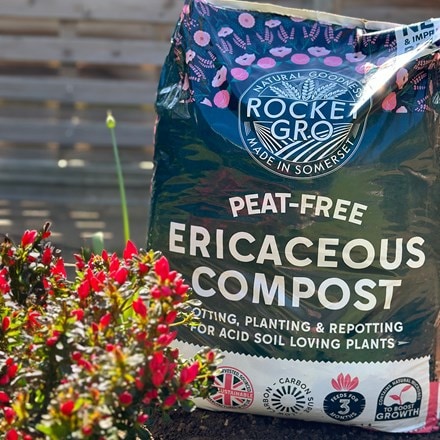Eventual height & spread
gin & tonic plant (Philotheca myoporoides)
gin and tonic plant (syn. Eriostemon myoporoides)
- 14cm pot
- £24.99
- available to order from autumn
Delivery options
- Standard £5.99
- Position: full sun
- Soil: moderately fertile, moist but well drained soil, or loam-based potting compost
- Rate of growth: average
- Flowering period: November to March
- Hardiness: tender (will need winter protection)
A bushy, evergreen shrub with aromatic grey-green foliage that releases a refreshing scent, reminiscent of a gin and tonic, when brushed.
A wide potential flowering period from autumn though spring, pink buds unfurl into waxy, star-shaped white flowers, adding seasonal interest and a delicate fragrance.
Popular with florists for its long-lasting blooms, Philotheca myoporoides bears stems which are wonderfully tactile with pimples.
Once established, it’s moderately drought-tolerant and requires minimal pruning. Ideal for conservatories and summer season patios, it will reach a more manageable height and spread of up to 2m (6ft) in large pots, and must be protected from low temperatures and frost.
A wide potential flowering period from autumn though spring, pink buds unfurl into waxy, star-shaped white flowers, adding seasonal interest and a delicate fragrance.
Popular with florists for its long-lasting blooms, Philotheca myoporoides bears stems which are wonderfully tactile with pimples.
Once established, it’s moderately drought-tolerant and requires minimal pruning. Ideal for conservatories and summer season patios, it will reach a more manageable height and spread of up to 2m (6ft) in large pots, and must be protected from low temperatures and frost.
This Australian shrub is best grown in a large pot with loam-based compost (such as John Innes) with some additional ericaceous compost added as the plant enjoys acidic conditions.
Best kept as a conservatory plant in a well-lit spot away from direct heat sources, or summer patio specimen that can be moved to a protected, frost-free location during the winter.
After flowering, lightly prune to maintain its shape and remove any dead or damaged growth, avoiding heavy pruning as it can reduce blooms.
Feed annually in spring with a balanced slow-release fertiliser to support healthy growth and flowering.
Best kept as a conservatory plant in a well-lit spot away from direct heat sources, or summer patio specimen that can be moved to a protected, frost-free location during the winter.
After flowering, lightly prune to maintain its shape and remove any dead or damaged growth, avoiding heavy pruning as it can reduce blooms.
Feed annually in spring with a balanced slow-release fertiliser to support healthy growth and flowering.




